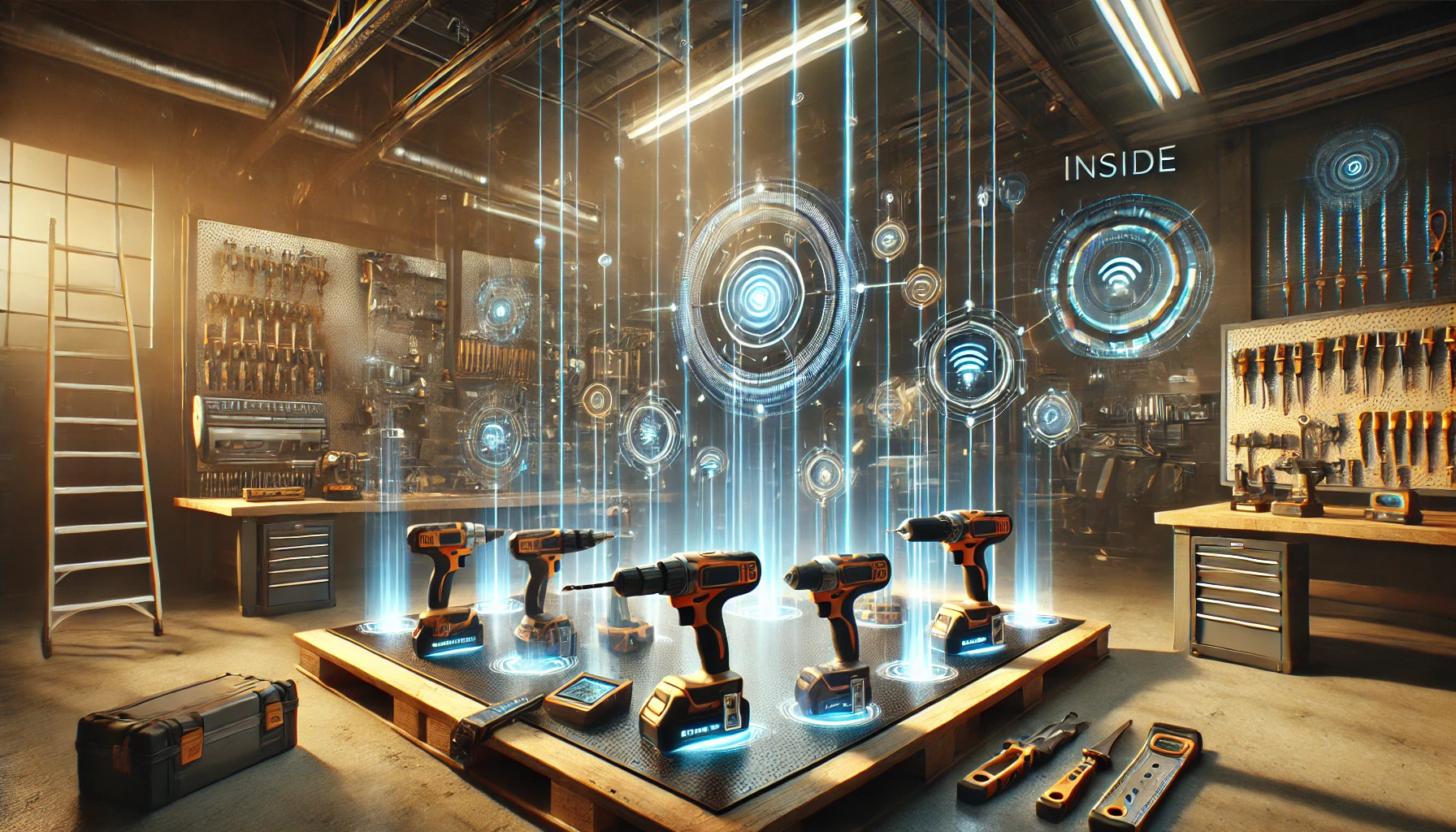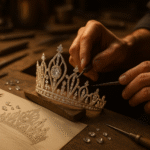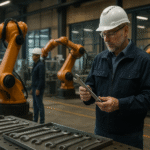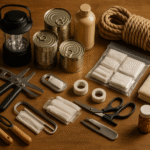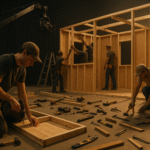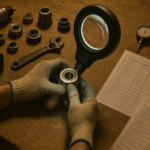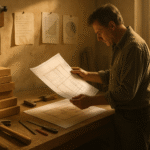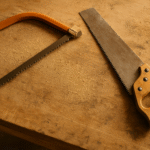The hum of a workshop used to mean motion, noise, and hands-on effort.
But in 2025, the workshop hums differently — quieter, more precise, more connected.
Each tool now carries a signal, a sensor, and a digital pulse. Together, they form a smart ecosystem that doesn’t just respond — it thinks.
At ToolCraftz, we’ve been exploring how connected tools are transforming modern craftsmanship, merging the intuition of the maker with the intelligence of machines.
Welcome to the smart workshop — where AI, IoT, and human creativity finally share the same bench.
The Internet of Tools
In a connected workshop, every device — from drills to lighting systems — communicates through a shared network.
Your tape measure can send dimensions straight to your 3D printer. Your saw can adjust its angle based on sensor feedback. Your dust collector can activate the moment you power up another tool.
This seamless IoT integration forms what many now call the “Internet of Tools.”
It’s not just automation — it’s orchestration.
Manufacturers like Bosch Professional and Makita are already building ecosystems where mobile apps monitor battery levels, torque performance, and tool status in real time.
If this sounds familiar, it’s because it builds directly on the innovation we explored in How AI Is Reinventing the Future of Tools and Workshops — where tools use machine learning to analyze usage patterns and anticipate user needs.
How Tools Talk to Each Other
The magic of connected tools lies in communication.
Modern sensors record vibration, temperature, and current flow — and feed that data into a unified control hub.
From there, an AI system analyzes everything:
- If your drill is drawing too much current, it signals a dull bit.
- If your lighting dims during precision work, it automatically adjusts brightness.
- If your air quality drops, your vacuum system activates instantly.
These systems run through Bluetooth Low Energy (BLE) or Wi-Fi, creating a real-time ecosystem of awareness.
According to IEEE Spectrum, connected workshops can reduce tool failure and downtime by up to 40% through early diagnostics.
This is the same concept behind our article Workshop of the Future: How AI + IoT Will Automate Your Tool Bench — where automation doesn’t replace the craftsman but enhances every move.
Beyond Apps: Predictive Integration
At first, smart tools simply collected data. Now, they predict outcomes.
AI-driven firmware recognizes irregular tool behavior before you even notice it — suggesting maintenance or part replacement automatically.
For instance, if your circular saw vibrates differently from normal, your system can warn you before the blade binds or burns out.
This same predictive energy system, powered by tabless battery technology, ensures that power is delivered efficiently and safely during high-load operations.
The result? Less downtime, longer tool life, and a smoother creative flow.
The Smart Workbench as a Hub
The future smart workshop doesn’t rely on multiple apps or screens — it centralizes everything.
Imagine a single digital workbench dashboard that displays tool diagnostics, lighting control, air quality, and battery management all in one place.
It’s part workshop, part cockpit.
And it’s the next logical step after the Smart Tools and IoT in DIY innovations we’re seeing today — where even small home setups are adopting connected, modular solutions.
Autodesk and other design software companies are already integrating with IoT data systems, allowing digital project files to sync directly with real-world builds.
Craftsmanship Meets Cloud Intelligence
For makers, connectivity is unlocking something far greater than convenience — it’s enabling digital craftsmanship.
Each tool session can now be logged, analyzed, and refined through cloud platforms, meaning your work becomes a dataset of mastery.
Imagine revisiting a project from months ago and knowing exactly which settings, speeds, and techniques worked best — because your tools remembered for you.
This approach aligns with the same sustainable, efficiency-driven mindset explored in Repair, Don’t Replace: The New Ethics of Modern Craftsmanship — precision through responsibility.
The Connected Maker Movement
Connectivity is no longer exclusive to large industrial setups.
From independent builders to hobbyist DIYers, the connected maker movement is spreading rapidly.
It’s driven by affordable sensors, open-source hardware like Arduino, and easy integrations via mobile and cloud platforms.
As Hackaday recently showcased, makers are already modifying legacy tools with microcontrollers to bring them into the IoT age — proof that innovation often starts at the workbench, not the boardroom.
The Future of Making Is Collaborative
When your tools communicate, they don’t just sync with each other — they sync with you.
The future of making is about collaboration between human and machine, where skill, intuition, and intelligence combine to produce work that’s faster, cleaner, and more sustainable.
At ToolCraftz, we see the connected workshop not as the end of craftsmanship — but as its next evolution.
The tools are learning. The craftsman is still creating. And together, they’re building the future.
